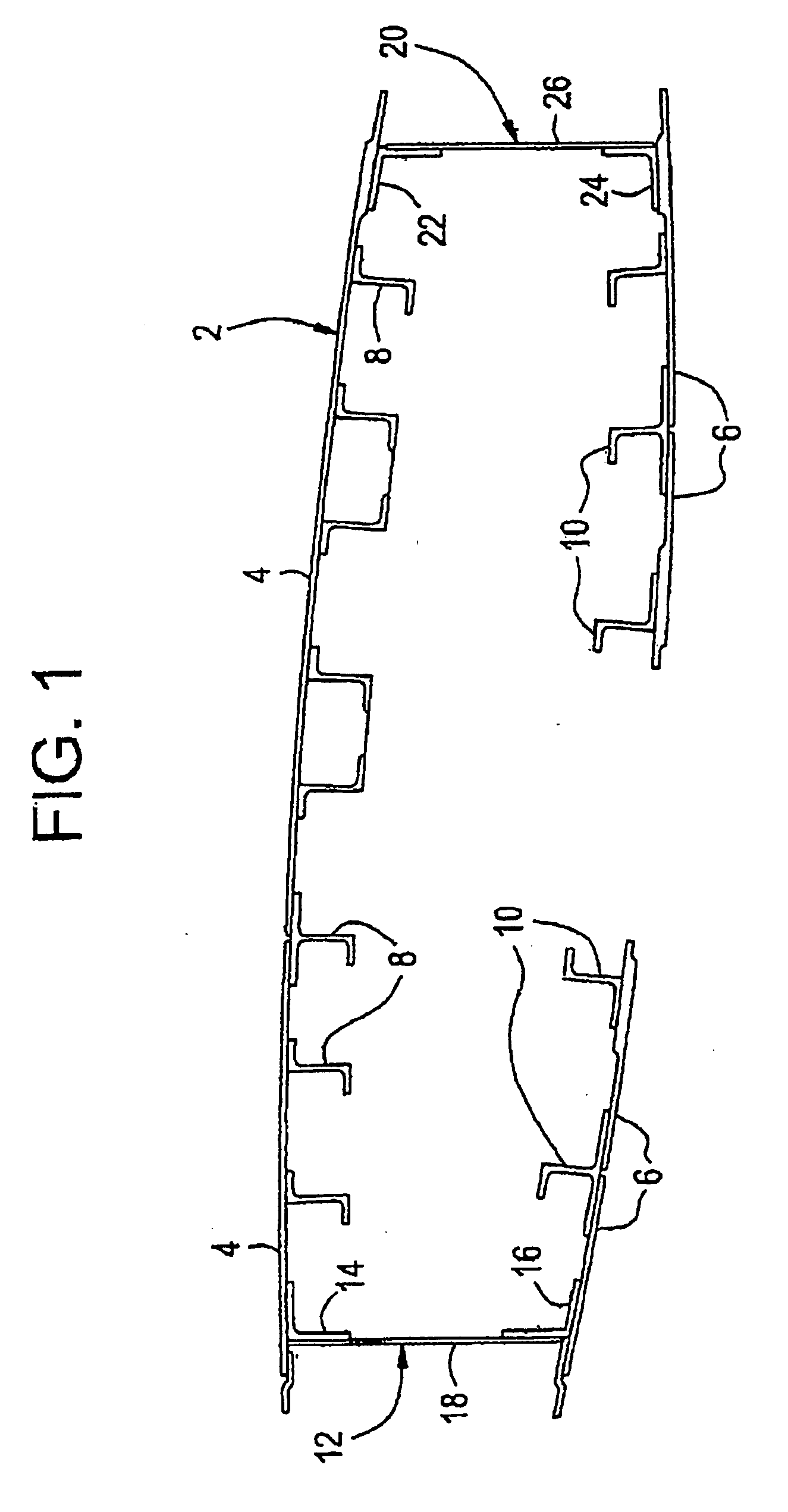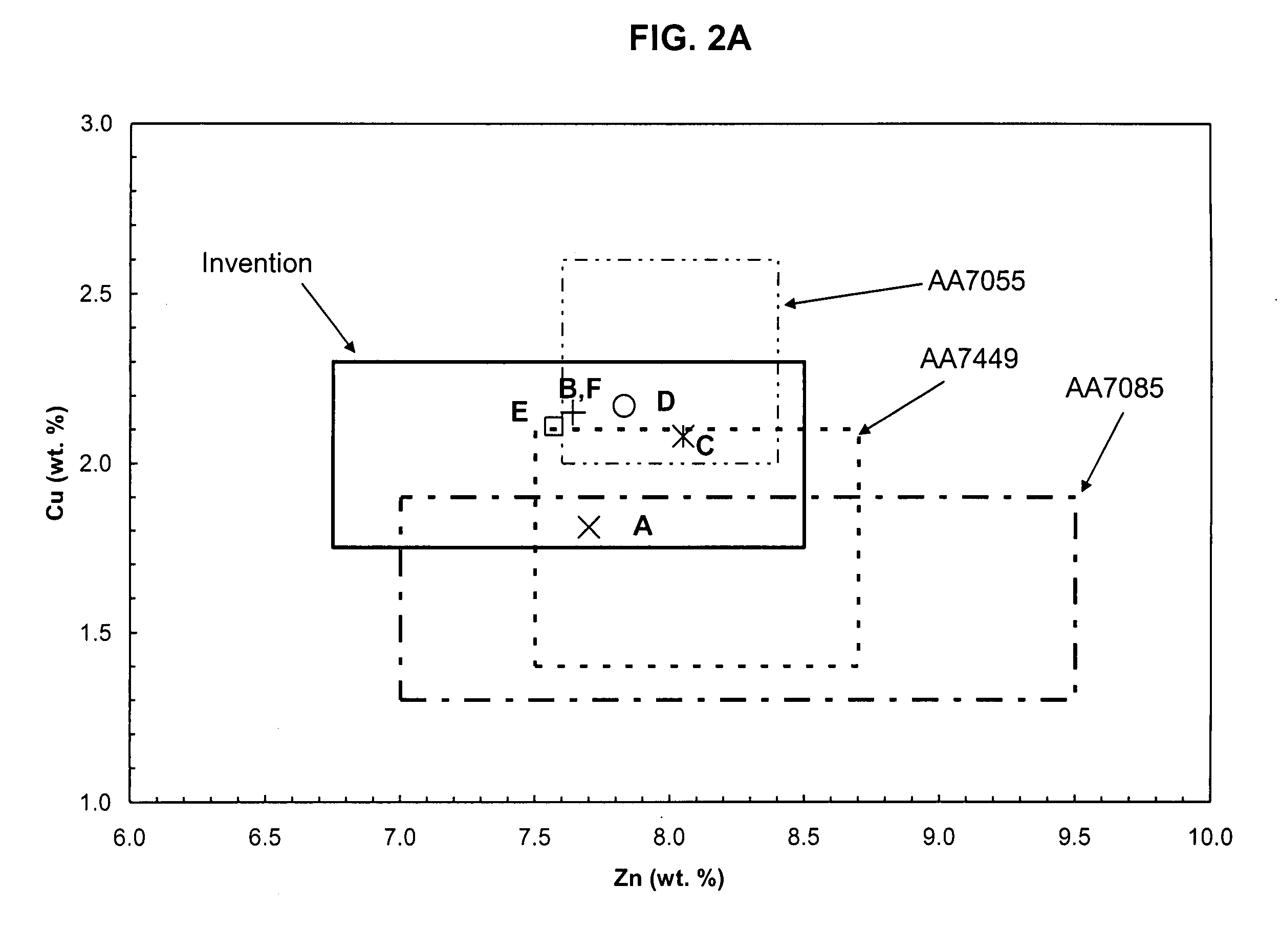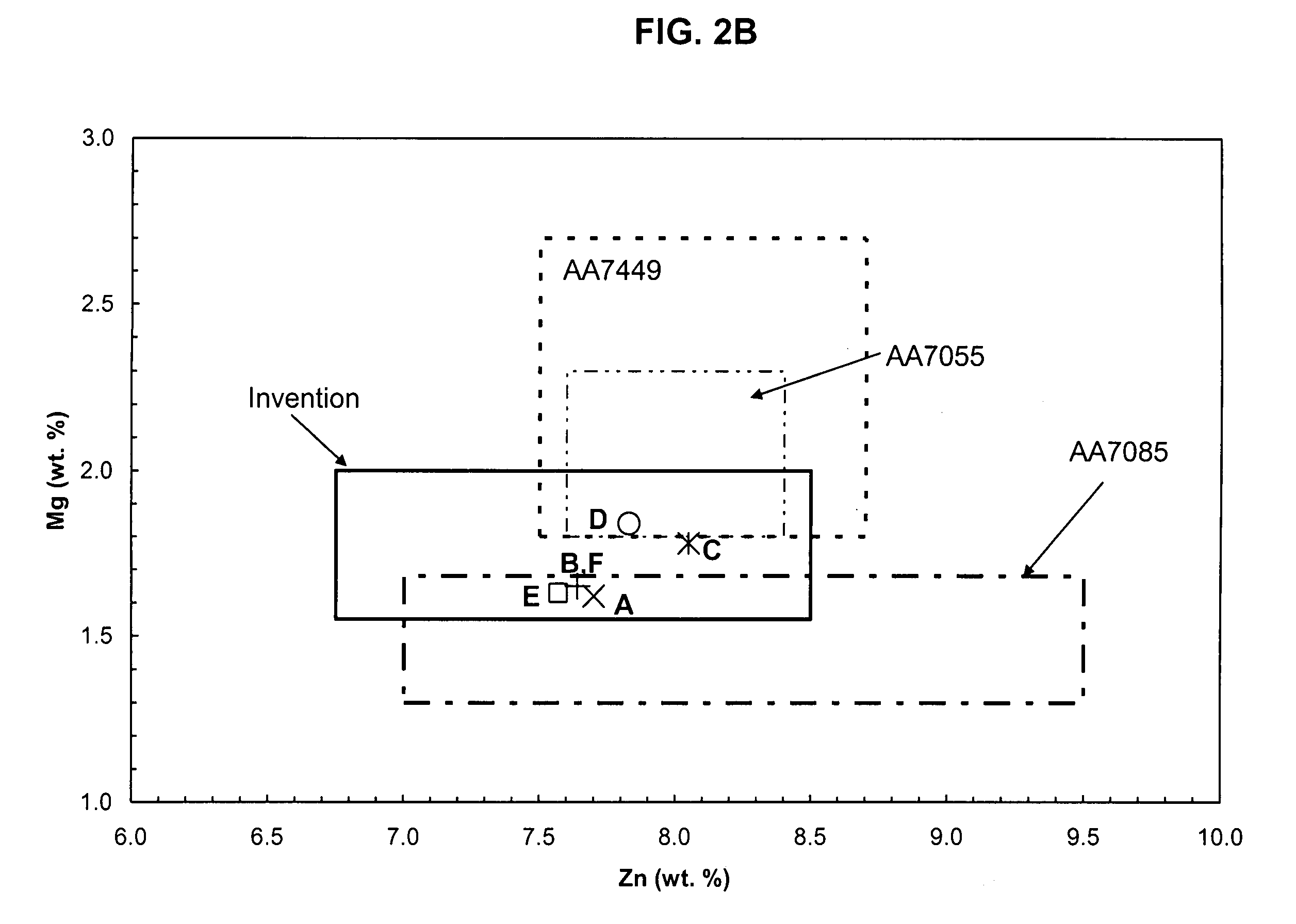Aluminum alloy products having improved property combinations and method for artificially aging same
a technology of alloy products and properties, applied in the field of aluminum alloys, can solve the problems of high tensile load in the upper wing structural members, high down-bending load, and limiting design criteria of fracture toughness, and achieve the effect of stress relieving alloys and improving the combination of strength
- Summary
- Abstract
- Description
- Claims
- Application Information
AI Technical Summary
Benefits of technology
Problems solved by technology
Method used
Image
Examples
example 1
[0064]Ingots A-D having compositions similar to the embodiments described above for the instant alloy family were cast as large commercial scale ingots. In addition, one ingot of aluminum alloy 7085 was cast as a control. The ingots were scalped and homogenized with a final soak temperature of about 870° to about 900° F. One ingot each of alloys A and B was hot rolled to plate having a thickness of 1.07 inches and a width of 135 inches. Another ingot each of alloys A and B was hot rolled to a plate having a thickness of 1.10 inches and width of 111 inches. The former will be hereafter referred to as Plate 1 and the latter as Plate 2. One ingot each of alloys C and D was hot rolled to the same thickness and width as Plate 2. Plate 1 and Plate 2 sizes are representative of upper wing panels of an ultra-large capacity aircraft. The 7085 control alloy was hot rolled to the same thickness and width as Plate 1. The plates were solution heat treated between about 880° to about 895° F. for ...
example 2
[0073]Four sets of samples in the solution heat treated, quenched and stretched condition (W51 temper) from example alloys A and B plate fabricated in Example 1 were given the first two aging steps of the three-step practice used in Example 1. Subsequently, the first set of samples were given a third step with an aging time of 24 hours, the same as that employed in Example 1, while the second and third set were given shorter aging times, of 6 and 12 hours. In the fourth set of samples, the third step was not applied (0 hours). Tensile specimens with a diameter of 0.125 inch were machined in the long transverse (LT) direction and short transverse (ST) direction for both an alternate immersion (AI) stress corrosion cracking resistance test and seacoast (SC) exposure test (also sometimes referred to herein as the seacoast environment stress corrosion cracking resistance test). Alternate immersion testing was conducted in accordance with ASTM G44, G47 and / or G49. More specifically, the ...
example 3
[0080]Samples of example alloy A plate in the solution heat treated, quenched and stretched condition (W51 temper) fabricated in Example 1 were machined into panels 0.5 inch thick by 6 inches wide by 35 inches long. Samples from 2099 extrusion were acquired in the T3511 temper and machined to the same dimensions. In both cases the length dimension was in the rolling direction 2099 is a commercially available aluminum-lithium alloy registered with the Aluminum Association having the composition 2.4-3.0 wt. % Cu, 0.1-0.5 wt. % Mg, 0.4-1.0 Zn, 0.1-0.5 Mn, 0.05-0.12 Zr and 1.6-2.0 Li, the remainder Al and incidental impurities. Panels of the example alloy A and 2099 were joined by friction stir welding with the weld line along the length of the panels. This combination of the instantly disclosed alloys and 2099, which have very dissimilar compositions could be used, for example, for a multi-alloy spar or rib. In a spar, the instantly disclosed alloys could be used in the upper cap and w...
PUM
| Property | Measurement | Unit |
|---|---|---|
| fatigue pre-crack length | aaaaa | aaaaa |
| thickness | aaaaa | aaaaa |
| width | aaaaa | aaaaa |
Abstract
Description
Claims
Application Information
 Login to View More
Login to View More - R&D
- Intellectual Property
- Life Sciences
- Materials
- Tech Scout
- Unparalleled Data Quality
- Higher Quality Content
- 60% Fewer Hallucinations
Browse by: Latest US Patents, China's latest patents, Technical Efficacy Thesaurus, Application Domain, Technology Topic, Popular Technical Reports.
© 2025 PatSnap. All rights reserved.Legal|Privacy policy|Modern Slavery Act Transparency Statement|Sitemap|About US| Contact US: help@patsnap.com



